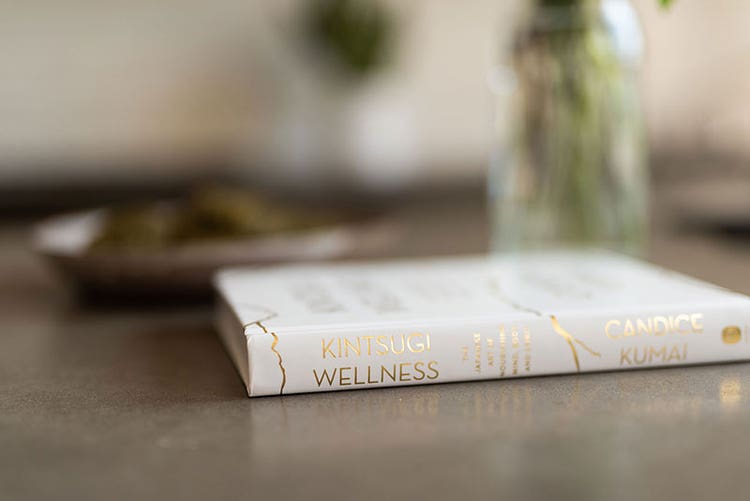Candice Kumai Cooks Nourishment of a Different Kind
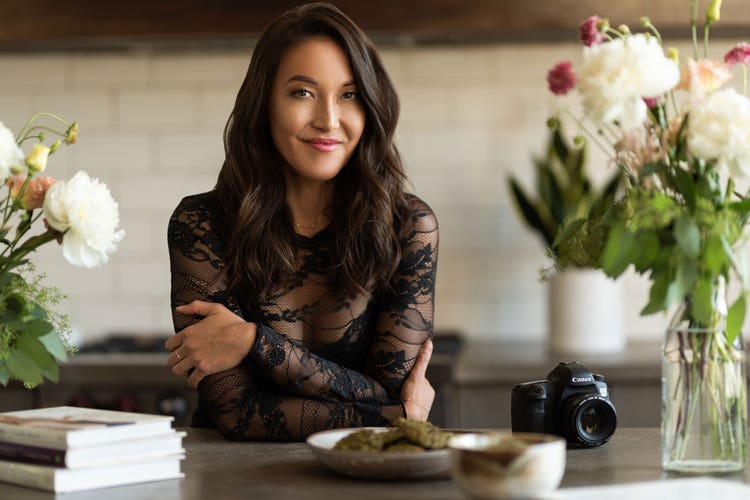
Candice Kumai is working on top of the center island of a kitchen studio in Brooklyn, New York. The chef, author, photographer and former model takes aim at a bowl of roasted kabocha squash framed by vases of blown white roses—and talks while she works. “Kintsugi is ‘the art of golden repair,’” Kumai explains.
The concept of kintsugi now infuses her work, as well as her idea of physical health and psychological well-being. Praised by everyone from media and wellness magnate Arianna Huffington to body-positive yogi and author Jessamyn Stanley, and even called “the golden girl of wellness” by Elle magazine, Kumai elevates her photography subjects above and beyond their inherent beauty. Her focus is on the ephemeral—the fragile satin of fresh blossoms, the fleeting texture of foam.
But those are her working hands with unvarnished nails and her sneakers at the edge of her photos and videos. And in fact, for her most recent book “Kintsugi Wellness” (Harper Wave, 2018), Kumai delved deep into her Japanese heritage, ultimately to define a life well-lived as a continuous process of restoring the whole—not in terms of achieving perfection. So I was eager to ask Kumai why she’s made food and food photography her medium for her broader message about wellness.
Wellness is resilience

First things first: When asked why food is important to her, Kumai responds that food, according to Japanese tradition, is a means to fuel our lives and prevent disease. But as she recalls the way the elders she met in Okinawa still grow their own food and walk everywhere, Kumai presents a broader definition of wellness. “It’s about making the best of the situation that you have and getting through it on the other side,” she explains. “Wellness is a matter of survival and endurance.”
Spending time with her grandparents and her great-aunt—survivors of World War II—shaped her regard for wellness as a matter of resilience and more. She wanted to disrupt the growing cultural tendency to define wellness as luxury. Spa baths, meditation and blissed-out recovery were all good and fun, and yet as she traveled and learned more about her family, she was continually reminded of several concepts distinctive to Japanese culture. Those ideas—chief among them wabi-sabi, gaman, ossetai and 10 others—add up to kintsugi and the making and remaking of a healthy, whole person.
On imperfection
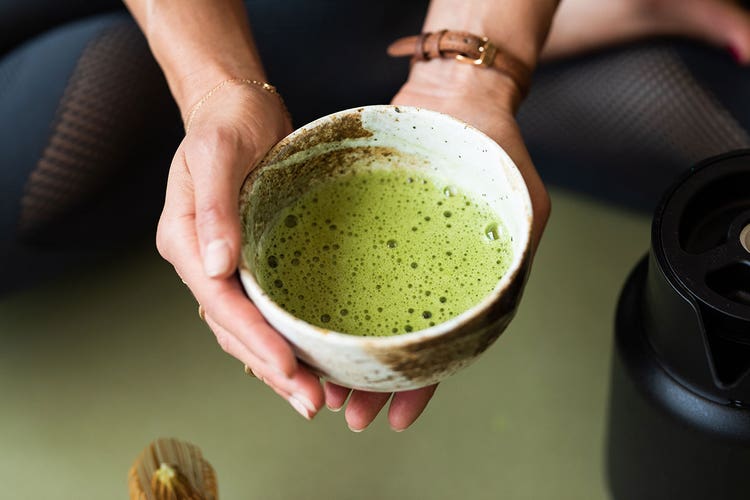
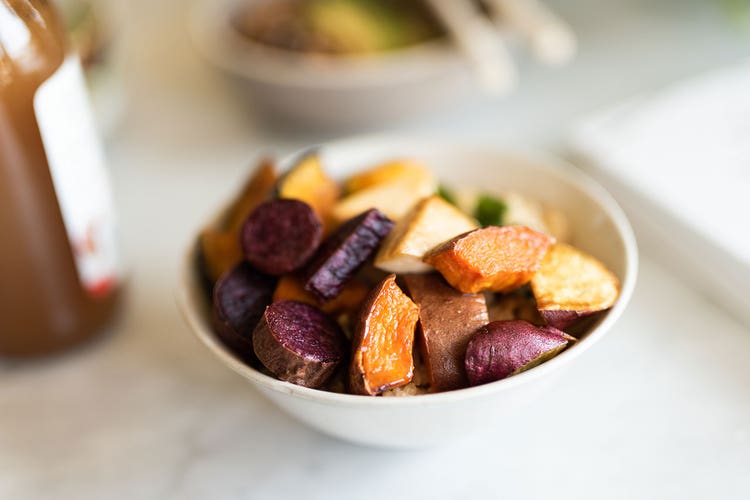
“Wabi-sabi refers to ‘perfectly imperfect,’ which is everything. The beginning of my life was so imperfect,” Kumai says of growing up half Japanese in a predominantly white San Diego neighborhood. She describes her parents’ union, which almost wasn’t: Her father, a U.S. Navy sailor, overslept past his second date with the Japanese schoolteacher he had met and liked. Kumai says after waiting an hour at the train station, her mother shrugged her shoulders and went home. Fortunately, her father called and apologized.
In contrast, Kumai says a significant portion of her career was contrived to be perfect. “Everything was staged … people feeding me lines: ‘Wear this. Say that. Don’t do this. Do that,’” she says. Finally, she refused. Her grandfather, an impressionist painter of note in Japan, and her aunt Kyoko Kumai—whose work has been collected by the Museum of Modern Art—inspired Kumai as an artist herself. “We cannot tell people what they should be painting, or speaking about or writing,” she says. From her perspective, authentic, unfiltered self-expression is integral to health and wellness.
Even at the expense of commercial success. “My grandfather wasn’t rich. He didn’t become the next Picasso. I may or may not ever end up monetizing my artistry,” Kumai says. “At the end of the day, I’d rather go broke doing what I love the right way, the way I want to do it, than doing it the way you want me to do it.”
On resilience
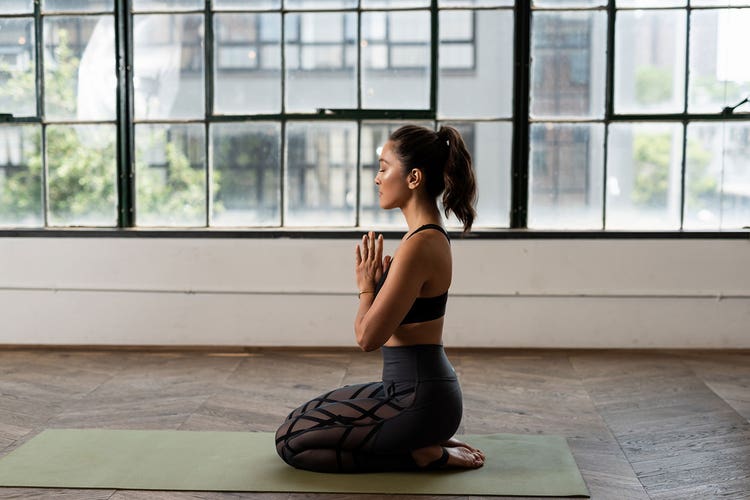
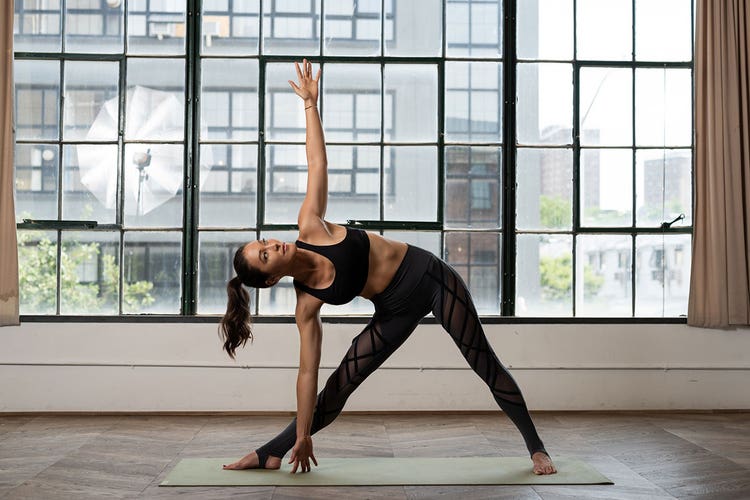
Her elders in Okinawa showed her the fortitude to withstand war, but Kumai says she first learned about gaman, which translates to “with great resilience,” when she saw the response to the massive 2011 earthquake and tsunami. Along with the destruction, fires and nuclear power-plant meltdown came snow.
“What you saw the Japanese do was line up. You saw them wait for food, for water, for blankets, for shelter, for help. You didn’t see them scream or cry,” she says. They showed gaman, which Kumai says means enduring and tolerating great pain inside.
Kumai acknowledges that not showing or talking about pain or struggle is contrary to American culture in which she grew up, but she believes gaman is what has helped her get through 15 years of pain, sacrifice and struggle as an artist in the food industry. Kumai says she was not being taken seriously because of her looks, her dress (she prefers high-top sneakers to a chef’s coat), but says, “I always knew that it was in me, but it didn’t really come out until people let me go and let me do my thing with great resilience.”
On the art of golden repair
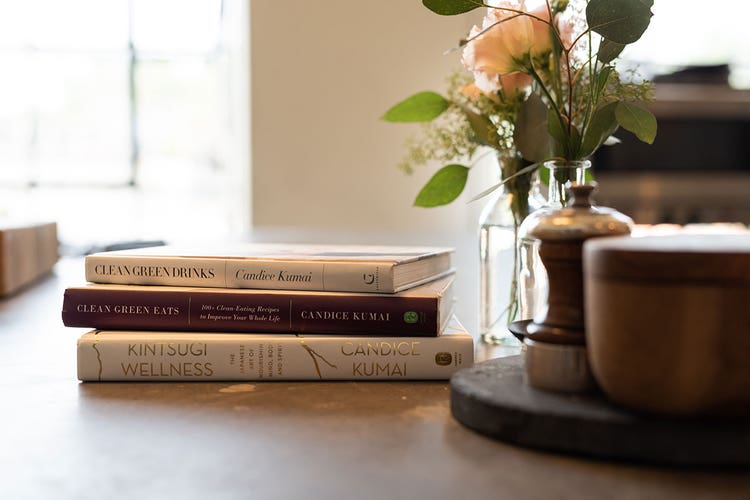
Kumai says she wrote “Kintsugi Wellness” for “every mixed kid … every girl who’s ever been broken up with … every person who’s ever struggled or … felt pain from being different, or being teased, or not being able to get through the day anymore, not knowing what their purpose in life is.” The book’s chapters are devoted to 12 Japanese concepts that helped her heal from a very difficult time in her life.
In that spirit, Kumai also launched her very popular podcast “Wabi Sabi.” She’s devoted to being open about her challenges so that her audience will know that what looks lovely on the outside is, she says, “so imperfect, it will blow your mind.” She recalls the three Food Network pilots that never materialized, the dwindling savings, the devastating breakup, the crowded food space filled with those who did not invest in years of culinary school, pay their dues cooking on the line, working more than 10 years developing their own recipes or learning to shoot their own work. “That s**t hurts,” she says.
Kumai hopes that sharing her hard work and challenges will prompt a paradigm shift and restore value to the knowledge and experience built through writing, producing, directing, photographing, developing and testing your own work. “In Japanese culture, you show and you do not tell, and I think that is the greatest lesson in wellness that we can share with others,” she says. “Showing people what you are capable of in your actions is so much greater than just telling.”
Action is especially important, Kumai says, given conditions like those she faced—and over which she had little control. She uses a culturally controversial Japanese expression, shikata ga nai, to free us from circumstances and conventions of success. “The term translates to ‘it cannot be helped,’” Kumai says, meaning, “If you just let go a little bit more, the universe opens up opportunity that you never saw because you were holding onto all those other things so tightly.”
Video & photo credit: Mark Kuroda, kurodastudios.com
Hair: Juli Akaneya
Make-up: Eric Revilla
